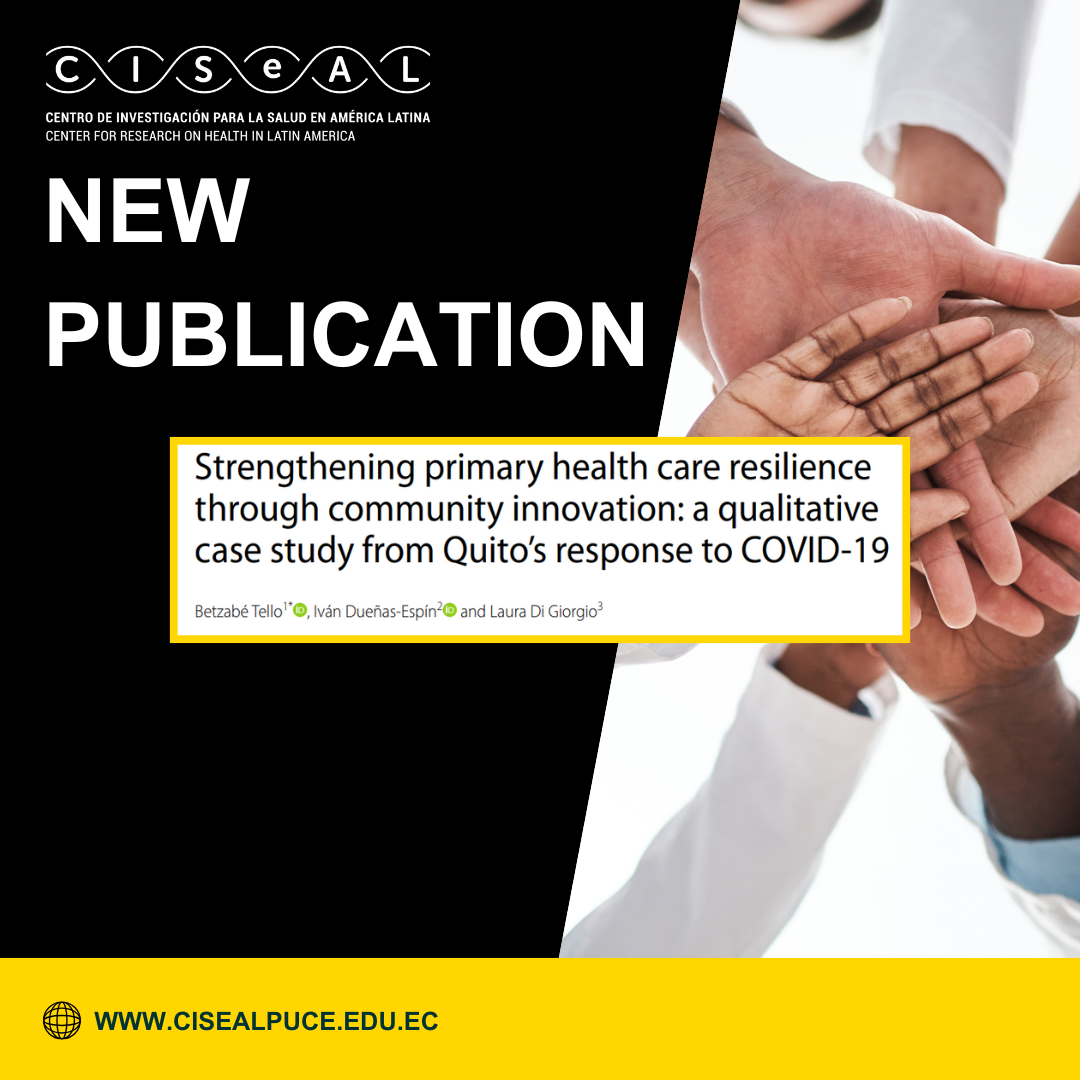 After the COVID-19 pandemic, the city of Quito faced the enormous challenge of transforming its primary health care system, which had been weakened by the health emergency and hospital overload. The following study analyzes how the city reconfigured its model of Community Primary Health Care (CPHC) during and after the pandemic, becoming a regional reference in health resilience and local governance. Entitled “Strengthening primary health care resilience through community innovation: a qualitative case study from Quito’s response to COVID-19”, it was led by Dr. Betzabé Tello, principal researcher at CISeAL-PUCE, and received support from the World Bank as part of its technical assistance agenda to strengthen resilient primary health care systems in Latin America.
After the COVID-19 pandemic, the city of Quito faced the enormous challenge of transforming its primary health care system, which had been weakened by the health emergency and hospital overload. The following study analyzes how the city reconfigured its model of Community Primary Health Care (CPHC) during and after the pandemic, becoming a regional reference in health resilience and local governance. Entitled “Strengthening primary health care resilience through community innovation: a qualitative case study from Quito’s response to COVID-19”, it was led by Dr. Betzabé Tello, principal researcher at CISeAL-PUCE, and received support from the World Bank as part of its technical assistance agenda to strengthen resilient primary health care systems in Latin America.
The study aimed to document how Quito transitioned from a reactive, hospital-centered model to a community-based, preventive, and territorial one, grounded in the social determinants of health and citizen participation. To achieve this, a qualitative approach was applied, including a documentary review of institutional sources, municipal reports, legal frameworks, and accountability documents from 2014 to 2024, complemented by in-depth interviews with health professionals, decision-makers, and administrative staff. This approach allowed for an understanding of both the institutional structure and the implementation processes of the model throughout the Metropolitan District.
Among the main innovations was the creation of 65 Community Health Teams (CHTs), one for each urban and rural parish, responsible for promoting health, preventing diseases, and coordinating actions with other municipal sectors. The CHTs operate in neighborhoods, schools, and homes, strengthening territorial proximity and community trust in health services. The research showed that active citizen participation was key to the model’s success, reflected in greater adherence to preventive programs, community surveillance of emerging diseases, and the strengthening of local leadership.
Findings reported in municipal documents indicate that between 2021 and 2023, more than 230,000 people received care through the CHTs and municipal patronages; around 9,500 adolescents participated in workshops on sexual and reproductive health promotion; more than 13,000 people accessed mental health services at the La Ronda Ambulatory Center; and over 34,000 students were reached through the Healthy Schools Strategy. Although these figures come from administrative reports rather than an integrated evaluation system, they illustrate the relevance and scope of the community strategies implemented.
The study also highlighted the consolidation of decentralized and intersectoral governance through the creation of Zonal Committees, the institutionalization of the model via ordinances, resolutions, and permanent budget allocations, and the implementation of physical and emotional safety protocols for CHT personnel, including risk maps, emergency communication systems, and coordination with local security actors. These measures ensured the continuity of community care amid rising urban violence. Furthermore, the Municipal Health Department increased its budget during the pandemic and maintained resource allocation across two subsequent administrations, ensuring the sustainability of teams and programs.
Among the remaining challenges, the need to consolidate the measurement of health outcomes beyond service delivery indicators was identified. Nevertheless, the community model improved territorial access, strengthened community trust, enhanced citizen participation, and ensured a more effective response to health crises. Ongoing staff training and the strategic use of digital tools contributed to the performance of the CHTs, reinforcing the integration of technology, territory, and community relationships.
In conclusion, Quito’s experience demonstrates that in the post-pandemic context, primary health care can become a space for social reconstruction and the strengthening of public health from the ground up. The city successfully transitioned from a hospital-centered and reactive model to a community-based, preventive, and territorial one, capable of responding to population needs with innovation, political commitment, community engagement, and institutional resilience—becoming an example for other Latin American cities seeking to strengthen their PHC systems in complex urban environments.
Would you like to learn more about this study? We invite you to read the full article at the following link:
https://equityhealthj.biomedcentral.com/articles/10.1186/s12939-025-02620-1



